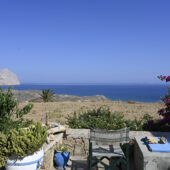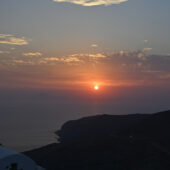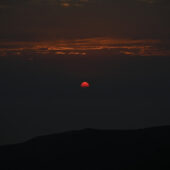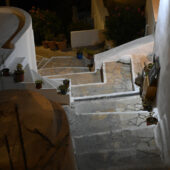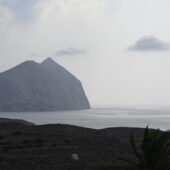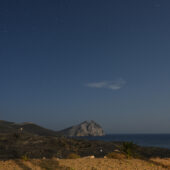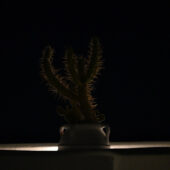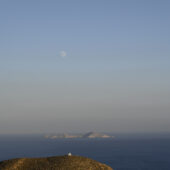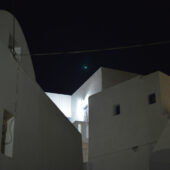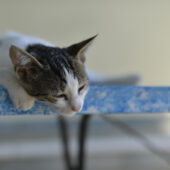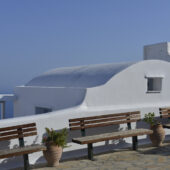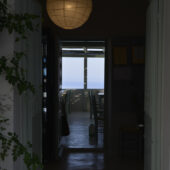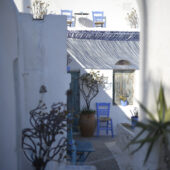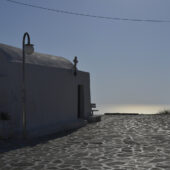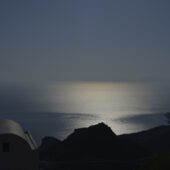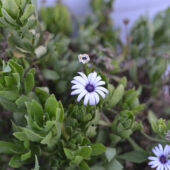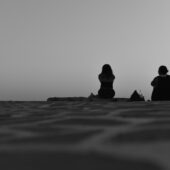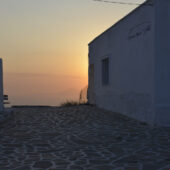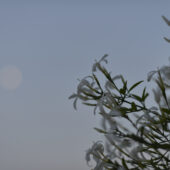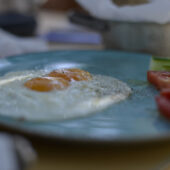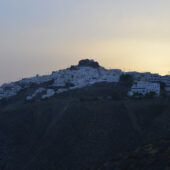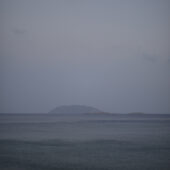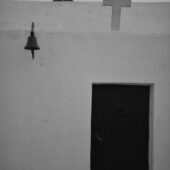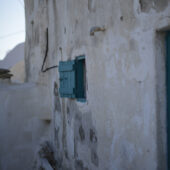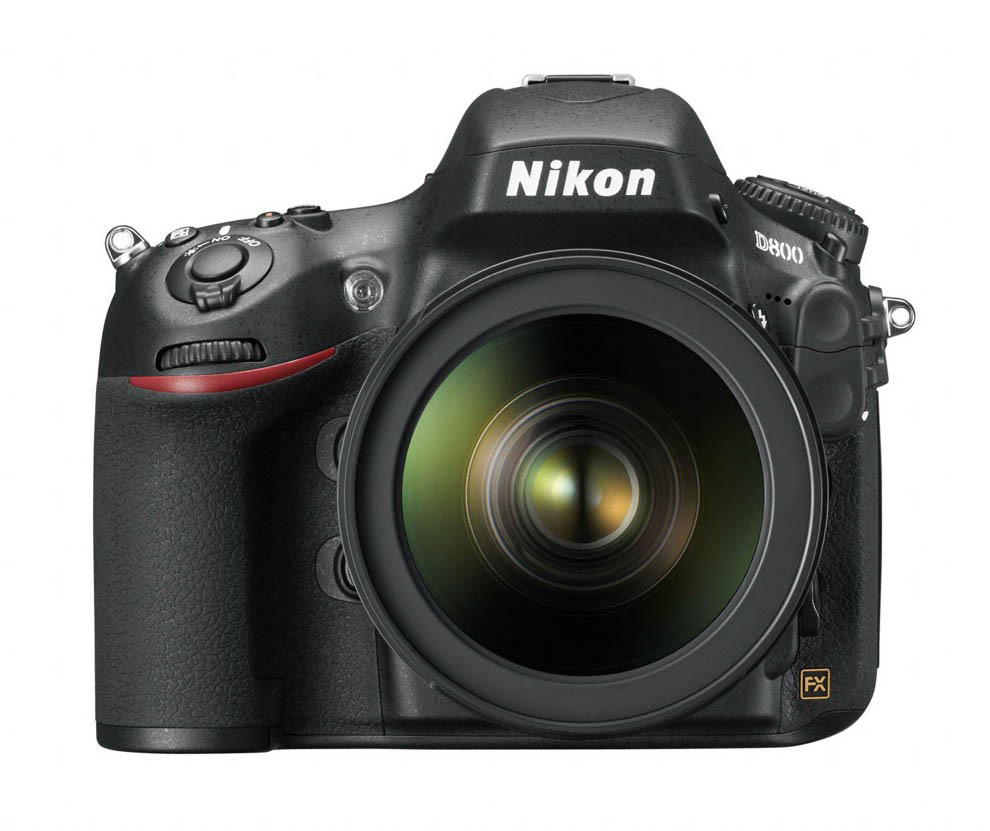
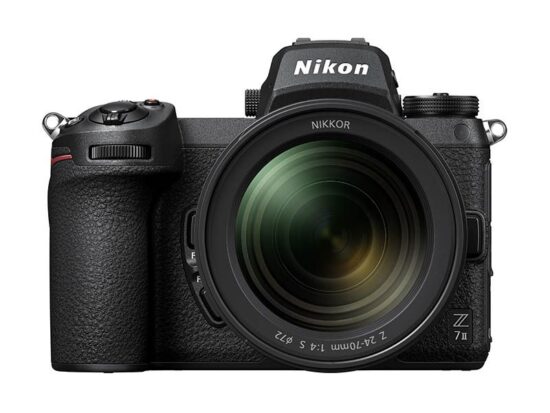
“The D and the Z – a tale of two Nikon bodies” by Thanos Deligiannis (see his previous guest post):
To quote the great Charles Dickens, it was the best of times, it was the worst of times. These, for some of us, are the times we live in as photographers in the age of the switch.
One viewfinder, two equal perceptions of reality, so different, yet both representations of the same reality. So different, yet so similar, in the same way cats and dogs are both domesticated pets.
One could find parallels to the switch from film to digital, but in this writers opinion, that (in dSRL world at least) was just two sides of the same coin.
The mirrorless switch is much more than this. It is the end of one perception of the world for another of the same. Thought the two viewfinders show the same frame, the gap is so vast between the two that commonality is merely in the name, not even in the function.
Recently my F-mount AF-S 24-70 f2.8 G ED had an accident. An accident that made me make the switch. In this accident I found two bodies, and these are their tales.
Chapter I – Before the Z.
Recently I was forced to the switch. An accident to my F-mount AF-S 24-70 f2.8 G ED was what it took. My choice, a Z7II with the Z 24-120 f4 S kit. Though I considered (craved) the Z8 with the Z 24-70 f2.8 S, the heavy instant cashback on the Z7II kit sold me on this small compromise. It didn’t hurt that the kit was in stock, so I crossed the checkout with a big box and a basket of accessories (as one of our species would).
Before some rush to comment, yes the D850 was an option, but with my standard f zoom dead, my main purchase needs where for glass, so investing in f glass in the end of 2023 was a dead end in itself. As I mainly needed the lens, F system felt like money down the drain at this stage.
It was the D850 that I lusted for years now, but funds are always to be considered as scarce. Be sure that if I could, I would own each and every one of the D body revisions.
When circumstances made the time due to move on from my D800 as a daily, I had to seek the scale and balance the pros and the “wants” and it was the lack of in-body image stabilization (unfortunately) the final nail on the coffin of the D850 for me, which would be my choice if it had it (actually I would have purchased one years ago).
Chapter II – the Z
Not excited without the D850 in my bag, but convinced I made the right choice, I experienced a slight buyer’s remorse from having skipped the Z8 and/or the Z 24-70 f2.8, but not as much as I expected I would.
Trust all I did was to check if everything was in good working order and left the camera aside until my upcoming trip. Nothing could get me excited about this new gadget in my possession. A single click, a few settings and a browse through the menu to get acquainted with the new options, that’s all I did. The reason, very simple; I knew what I was expecting and what it was that I had just purchased – a tool to take pictures (and videos, for those who care, if I read the review(s) right). An amazing, if not the best, tool to do this.
I am a man with Nikon 1’s in my arsenal and not 1, or 2, but 3 J5’s so, not new to the Nikon mirrorless world and what to expect they offer in terms of shooting experience. If you have not used a J5, you will be surprised of the similarities in operation and controls.
So what I expected was a Nikon 1 on steroids, one could say as an exaggeration, but not a photography camera, a tool to take pictures, but not a tool to make images. A marvel of technology and innovation, but not a marvel of mechanical engineering and precision workmanship. A marvel to own, but not a marvel to hold. I doubt not that my expectations will be far from the reality, what I will try to explore here is the degree to which these predictions are accurate.
What may help one get some understanding of this author, is that my main cameras have been a D50, a D300 and a D800. If go back I can tell you that the greatest camera I ever experienced was my D300. After my D50, a professional grade body with the professional in mind was magic. Just trying to operate it taught you how to think as a professional photographer. Well thought out, every function carefully considered (no touch screens there), with a physical control at your fingertips for each critical operation. What was most memorable thought was the feeling of holding it in my hands and the satisfaction of every click. A sequence of noises as multiple cogs move with the accuracy and precision that the engineers planned, to unravel a chain of events and make an image. I am sure most of you know what I am talking about.
With the Z7II there’s no noise, just a click of silence, as I call it, when the shutter moves, a satisfying click none the less, but not one of authority and achievement. Yes, the image quality is impressive, but didn’t give me the same wow factor as the D800 11 years ago – the D800’s detail blow up everything out of the water back in its day (and still impresses).
So what urged me to write this tale on this 3 year old camera that I’m supposed to hate, well if we are to embrace the new and move forward (at least as Nikon users) we must allow the new for it’s goods and criticize the bad, which hopefully will be improved. With the Z7II and the D810 it seems that Nikon does follow the comments of the community and actively implements the users’ needs.
The Z7II offers many reasons to love it. When one holds it, it comes out as well built and thought out hardware. It is offers a sense of continuity and a blend of what they could move on from the D’s to the Z’s. It still feels inertly Nikon and still feels premium. It is partly a compromise, but done so by someone knowing was making a compromise. The learning curve is minimal. It offers an experience of confidence and accuracy like never before. The colours, oh the colours, the glorious colours. The speed and accuracy, if the Z8 is even faster I cannot imagine what that is. The F-mount AF-S 24-70 f2.8 G ED with a modern day D body was instant fast, this though is on another level of instant. You point, you shoot, and it is dead accurate. The more you use it, the more you fall in love with it. It is not as evil as you thought; it drags you in its ways. You take a picture and you want to take the next, just to be impressed again, but by the time you decide to do, it’s already taken by the camera. Here is where you start to identify the devil in his disguise, reeling you in with the easy, making pictures appear perfect out of thin air. Yes, it is a great experience and yes, it is more than one can dream of for taking pictures on a click of the finger. It is a feeling of completion and the click of silence that makes me addicted to take the next. As I write about the Z7II, I find that I’m inclined to use the phrase “reel me in” and this is what the Z7II tries to do, reel you in for the next one, and successfully it does so. What I found though, is that it tries too hard, it focuses too hard on the point-and-shoot experience (potentially trying to bridge the gap of old camera with modern smartphone). It is the perfect point-and-shoot, it is the Nikon 1 that should have been in this writer’s opinion, just the wrong size.
Still so many are the qualities the Z7II that make it a great device. A device that surprised me and will surprise any photographer with more positives than initially foreseen. The robust build, the urgency of each control, the overall image quality (dxo ratings are not the full story), the endless customization options, are just to name some. It feels perfectly balanced in the hands, dare I say better balanced than a D-SLR with the standard f 2.8 zoom, something that further lifts the process of involvement. The image stabilization system is infinite times more impressive than the expectation and the click of silence, grows on you, as a subtle reminder of some mechanical operation taking place and it starts to feel more and more as a machine and not just a device. No matter how hard you try to find it though, the D inside it is lost and the experience is to me not alienating, only just because such were my expectations from the Z.
Yes, the hook of the Z is stronger than initially expected, though not enough to equal what the D has to offer in terms of addiction. The issue I found with the Z is that it feels too digital. It incorporates the analog and the manual as an option, may I even say, an afterthought. When the D was and SLR with digital film, the Z is a digital camera with manual control options. Yes , the Z7II can change your mind on the mirrorless it can’t and will not change your mind on wanting a D. A D with built-in image stabilization, but still a D. Finding the eye is a great feature but eye detect does not make a great camera, just a more useful camera in certain scenarios.
Impressively enough, it was the auto focus that killed my experience of the Z, not as a system, but as an integration in the Z. You see, of all the times the Z failed me was when I wanted to instantly switch AF shooting scenarios. No button, no switch, just pure menu and touch screen nonsense and in the “i ” quick menu, if you don’t press OK then your selection is not even activated, what is up with that (?). Why do I need to “OK” something I just went through a quick touch menu to select by finger, why the extra action. Reminds of using old version of windows “are you sure you want to apply this setting?”, and this is not what one wants when trying to take a picture of a moving reality. I missed shots just because I thought I had something selected, but it wasn’t applied because it also needed an extra ok; looks like a leftover from the cursor-only system, where the OK made sense. Even worse, I found a way to appoint a button to take HDR image but not one to select a specific AF point or to scroll through AF settings. This was a whole lever in my D300 and a dedicated button on my D800. Although whilst writing this, I realized I was wrong, I wasn’t completely wrong, you see I was looking for indications of change through the viewfinder or the top screen where the changes are not shown, unlike my D800 which would show on both. As while further using and seeking on-line for answers, I am further proven wrong with the AF mode being shown on the top of the viewfinder; bur have decided keeping these parts to make a point, many options is a great thing, too many or infinite options, is not a good thing and a path to getting lost. It’s not an easy thing to master and easy to get wrong. I found the viewfinder is half the time a clone of the screen (ie switching metering) and half its own contraption, from my perspective at least, this does not a fluid operation make nor a professional grade product, especially one that is supposed to be a succession product and one of such great heritage. Unfortunately, the pentaprism is no more. Now the viewfinder has to be a different thing, and should be so for the things it can be better (e.g., show me things without need to lose my focus) to win us over.
Having spent a few days with the Z7II, this is where it so far lost me. Some things, especially core things are simple and should be implemented in a simple fashion. It’s nice to have some customizing, but not everything should, if the engineers can’t figure out the key functions why should the user, it’s not like more buttons are added to allow for more options, they are actually less. I hate sounding like my grandpa, but nowadays it seems many things are done in this way. Take cars as an example, why should one need a manual just to turn rear door child lock and why should that simple thing be on a menu in a screen and not just a simple switch next to the relevant door (and how can one know if indeed the feature is activated or the actuator actually actuates). Drifting off again I know, but not for any other reason, other than that the Z is another product of our turbulent times, where in some cases designer is not a user of the same, either trying too hard or not getting it; too much GUI software and less deep thought in the process of product design, why make a perfect product 1st try if you can update the firmware later.
A touch screen and customization buttons is a nice to have, but core functions need direct access and AF settings in a professional grade camera are, it’s a button everyone will need, so have one. We had the PASM dial, that was replaced with the mode button, to be back once again to PASM dial (Nikon claims “and seamless integration with Nikon’s DSLR system” on the website – is the Z7 a D780 replacement? Not if you consider price range) and now when in the dark, the top screen does not show the mode, so you can be partly lost. Even worse it seems that the Z9 and Z8 don’t have a PASM dial, plus on their top screen more details shown – in professional grade products such deviations are unacceptable and should not be part of the buyer’s research prior to purchase, a pro grade Nikon is a pro grade Nikon and the usability fundamentals should be the same, unless you buy a “special use” type edition. Thankfully, on the Z7II, part of this can be fixed by firmware update showing me in the viewfinder image the AF scrolling options and adding more to what the top screen is showing, but not all are such. If the main screen is such an important part of the device, why doesn’t it come with a replaceable protector like the D bodies did and if this is such a professional product, why does manual focus has the same animation as any point-and-shoot or Nikon 1. Staying on the focus operation of the Z system, for me the biggest letdown is the lack of the mechanical MA focus operation that I just loved for its feedback, urgency and communication to my fingers, with the non-tactile jog-dial that took its place, the focus lost its entire feel and this I cannot excuse.
The simplest way I can find to summarize the difference is the feeling you get of what is required from you, the Z you “use”, the D you “operate”. Yes the Z is the future, and is one of many attributes to love and keep you shooting, but unfortunately a D it will never be, maybe just because the “focus” from the photography as process is lost… And so, a small part of me regrets not getting the D850.
Nikon Z7II with 24-120mm f/4 S lens (all images from the same trip and jpeg out of camera only resized):
Chapter III – the D – living with a 50
Ever since I saw the stains from being liberal and brave swapping lenses without reservation, I became a one-lens-man. That is why I usually opted to have my f-mount AF-S 24-70 f 2.8 G ED as primary glass for every occasion and travel. As a result became accustomed to having two defining parameters, a. the flexibility of a zoom and b. a heavy, large bulk on my camera. With the f-mount 24-70 2.8 damaged beyond repair and a zoom mounted on my new Z7II, I opted to mount on my D800 my only prime, the compact 50mm 1.4 AFS.
Instantly a weight has been lifted, not only literally, but also the weight of over thinking the framing and this completely changed the experience. I have used it in the past in scenarios that were planned, never thought as a full-time daily. If you haven’t tried it, it is a must. You can do the 24 or 28 or 35 mm, but whichever you decide, it is a must. I thought the 50 would be too tight an angle and I would need a 35, but the 50 is lovable when you get into its rhythm – now I cannot wait to also try the 35.
When my standard zoom broke, I thought I lost not only a lens, but also a camera, and the nifty fifty proved me wrong. It also proves that you do not need all that much to have fun with a camera, just a good camera.
Not as sharp or fast to focus as the broken zoom, if you opt thought to manually focus or select a fixed focus point, you get such an immersive affair. You want to click more and more, and the wide aperture a joy for the portrait part of the day shoot.
I find myself wondering why I haven’t forced the 50 as a daily earlier.
The D800 is now transformed from a beast of a professional tool, to a daily street roamer. Cozy in the palm, ready to create in a completely different way. It feels real, more analog than ever, and the sound of the shutter offers that last secret ingredient to the sauce that makes it feel whole.
Taking each next image, provides more pleasure than the last, and you just want to use it more and more, which to me is what photography is mainly about, the pleasure of making images from what is around you and “decrypting light” to transfer the feelings of the scene.
It is one thing to have a camera on you and another to want to use it, and this is where the D wins, whether with a zoom or prime, I just want to use it more and more… And the best thing is, each of the two experiences is uniquely different.
Chapter IV – The two bodies
Well this was the most impressive outcome of my story, a story that started on a security checkpoint of the Prague International Airport, where my camera bag was dropped resulting in losing my go-to/full-time daily lens, the standard zoom. The second body, the D with a prime has been the camera I never knew I had and that the D is two bodies dressed in one.
In this short journey with two cameras, I was both saddened and joyed. Now it is the time to decide if I will start with the joy and end with a nostalgic epilogue, or go the other way round ending with a positive note.
[time for a break to gather my thoughts]
Starting out on this story I thought I new the ending and was ready for the nostalgia approach, but what writing this has done was to make me recap my thoughts and revisit the cameras as the words were put on print.
Having done so, I found that either of the two endings will be fair, maybe not equally, but still fair.
It is the D that is two bodies in one and the D that drives me to the next click, yet I decided to end on joyous side just because the Z has been more than initially expected. The virtual viewfinder, however impressive or advanced is neither as organic nor fluid as the real view through the mirror, and thought convenient to see the how the picture will come out based on settings, takes out more than half of the experience, at least for me. It is “modern” the virtual perception of the world, but it’s not me, and will not be me, but the showed me that it can be also for me, which is a fine compromise for the days we live.
I will never forget the D and will not stop operating it, yes, I would prefer to have a new one come out that is an update from time to time, and I would without any reservation buy a D850 with sensor based image stabilization any day, but that is not in the cards. Such are the times we live in, times of video being a priority and smartphone cameras doing it for most, allowing only for a small niche of revue generation. The D is the better body and is much better as a tool to make images. Especially in the dark, where the real view of the mirror is replaced by dark and noise, the Z just highlights its detachment from the reality of the surroundings. The D will need more time, more work and more equipment in the process of making an image, but it will reward you like nothing else. It would be great if we can have both Ds and Zs, but that is not in the stars. The Z is great in being a device to take pictures (and videos they told me at the store), but it stops there, an analog device to a mobile phone user, but not an analog photography camera. And to me, worst of all, the Nikon 1 I always wanted, just the wrong size.
The Z7II, I found to have unacceptable omissions when it tries to become a professional grade camera body and to me, aside from the lack of screen cover, the focus experience from the operator stand point is inexcusable in the lack of simplicity and versatility in finding ways to switching modes, to the Nikon 1 style bar when trying to manual focus – I will not start on the convergence of the focus ring with the electronics, as potentially that is more to do with the D vs Z argumentation and something that can’t change, hopefully some lens will come out (if not here already) for the Z mount that will incorporate such a design. There are also good news though, in these modern devices a simple firmware update can do so much, like offer top screen and viewfinder indications in more intuitive way, and update to touch-to-apply setting under the “ i “ quick menu, so changing settings by touch feels more natural and more like any modern device. As many generations have been inspired by the F and as I was inspired by the D, let’s hope the Z will inspire more to go beyond, and be photographers and not just shooters, the ingredients are certainty there, but the recipe needs fine tuning.
The Z7II, even taking into account my complaints priorly noted, is not camera that failed to impress and prove to be beyond my expectations; and although I had to use many “buts” when writing on the poZitives, it was because many were the poZitives. However, all that my journey proved is that I should get a D850, the Z7II also proved that I should get the D850 alongside the Z7II and not instead, that is a huge surprise for this author and a big win of the Z7II. The Z will never be or become a D, just because of the way it presents the “now” to its user, but maybe one day, with some tweaks and the right lens it may become more than just the Z, but two bodies in one…
A list of simple ideas for firmware update to vote if you want or not for your Z:
- Scrolling of AF shown on center of viewfinder like main screen
- Showing more changes (i.e., AF, PASM) on the top screen so you can use at night without main screen or having the camera in your face to look in the viewfinder when doing so.
- “i” quick menu item when touched applies without “OK” pressing needed
- A tough one – PASM mode button implementation so can switch modes on the fly with eye in the viewfinder – at least momentarily – even better a U mode can have a quick mode select under options
- Direct access to one or a user selection of AF modes as I find we have too many new ones and it is time consuming to go through all to get to the one you want (one can set U1 for landscape and U2 for portrait where the AF needs are different)
- Presets for U modes included so user can which between them easily, effectively multiplying the U modes – this also allows for special Us to be created for various scenarios without losing core ones.
- Exportable Us so users can exchange or transfer to multiple cameras they may own – this includes naming them as well.
And not a firmware item, but a lens with the “old” tactile AF ring… it can be a prime, but it should be, it’s a perfection that everyone should experience…
Nikon D800 + Nikkor 50mm f/1.4G AF-S lens (all images from the same trip and jpeg out of camera only resized):
If you have an interesting idea for a guest post, contact me here.

